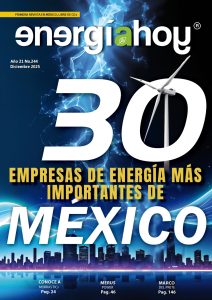Scott Hempling Attorney at Law LLC Effective Regulation of Public Utilities
September 2019
Last month’s essay argued for certification—or at least for sustained conversation about certification. This month, I offer thoughts and questions about how certification might work. I focus on possible certifying entities, processes and curricula for supporting courses.
Possible Certifying Entities
Certifying entities fall into three categories: academic, government and private.
Academic institutions certify acquisition of knowledge by granting degrees. The requirements vary widely by institution and subject matter.
Government bodies certify readiness to perform specific services that government has determined require certification, such as law, pharmacy, medicine, realty sales and engineering; even cosmetology, massage therapy and tattooing. In these situations, government rules prohibit noncertified persons from performing these services—or at least claiming to be certified when they are not. In the legal profession, certification beyond the general bar exam is rare; indeed bar rules typically prohibit a lawyer from claiming to “specialize” in anything (patent law is a prominent exception).
But—news from North Carolina, from a renewables lawyer there: “A group of attorneys in North Carolina is petitioning the North Carolina State Bar to create a new area of legal specialization for utilities law, which would include practice and procedure before the North Carolina Utilities Commission, representation of clients subject to the provisions of state and federal utilities law, and representation of investors in the field.” The requirements would likely include “five years’ experience in utilities law, a minimum of 400-500 hours of practice in the area per year, CLE requirements, peer review, and passing an exam.”
Private organizations certify readiness to perform services where certification is not government-regulated. In these situations, a profession, through its organization, has determined that there is value to the public and to the service provider (in terms of market value) to create a certification process. Examples of such professions are financial planning, city planning, meeting management and religious ministry. There is the Society of Regulatory and Utility Financial Analysts, which certifies through an exam. And there is even an organization that certifies alcohol servers. See tipsalcohol.com. (TIPS stands for “Training for Intervention Procedures”—”the global leader in education and training for the responsible service, sale, and consumption of alcohol.” It provides certification “valid or accepted for use in bars and restaurants in 30+ states.” Certification, I am told, can protect a bar from lawsuits by those injured by drivers who drank there.)
The three categories of certifying entities also reflect differences in the purpose of certification. Academic certification serves the purpose of upholding academic standards. Government certification furthers public policy goals of protecting consumers where there is great differential in knowledge between provider and consumer; e.g., someone needing heart surgery is not competent to compare the skills of competing surgeons. Private sector certification focuses on practitioner skills, as a way of demonstrating to the public that skills matter in the quality of service. In contrast, noncertified professions—bicycle repair, baking, landscaping—depend on reputations created by good work and word of mouth, along with advertising.
Applying these concepts to utility regulation: The central value in certifying regulatory professionals is not that they meet “academic” requirements but that they meet practical requirements. This value suggests that the certifying entity should be an organization formed by regulators, perhaps advised by practitioners and academics.
Possible Certification Processes
Certification processes usually involve either/or (1) completing certain courses or curricula (“completing” meaning mastery, not mere attendance); and (2) passing a qualifying exam. Note the reference to “courses or curricula.” Some certifications require a single course. Others require a multicourse curriculum. Some questions to consider:
- Could there be alternatives to the qualifying exam, such as publications, testimonies or cases argued?
- Is a qualifying exam sufficient, or should there also be an experience requirement? If so, should that experience requirement consist merely of years survived, or instead require specific activities or accomplishments, such as briefs written, witnesses examined, testimony offered?
- Should there be, in addition to the qualifying exam and experience, other requirements, such as: a published paper (a nice way to enrich professional dialogue), oral interview conducted by regulatory professionals or some other contribution?
- Should certification be a one-time event (such as the lawyers’ bar exam or accountants’ CPA exam)? Or should there be required refreshers, like board-certified physicians have? Should there be opportunities for advanced certification?
- If the focus is to certify professionals, then is there a need to certify courses? Here are three alternative approaches. First, make courses optional and refrain from certifying them. Course providers would differentiate themselves in terms of how well they prepare individuals for the qualifying exam. Second, make courses optional but certify certain course providers. This is the model most often used for continuing education requirements, such as where the state bar grants continuing education credits to those who take courses from approved providers. Third, require certain courses and certify competing providers. In this context, the certifying entity requires that the individual take particular types of courses, offered by competing, certified providers.
- Common to all these questions is this foundational question: What types of mastery is certification seeking to produce?
Designing a Curriculum for Certification
Recognizing the many possibilities for a curriculum leading to certification, here are some opening thoughts.
I have defined an educated regulator as one who knows regulation’s subject areas (market structure, pricing, quality of service, physical adequacy, financial structure, corporate structure), its legal sources (substantive law, constitutional law, administrative law), its professions (law, engineering, accounting, finance, economics, management), and its procedures (information gathering, decisionmaking, enforcement).
Dr. David Boyd, former Chairman of the Minnesota Public Utilities Commission (now head of regulatory affairs at Midcontinent Independent System Operator), has suggested a three-layered curriculum. The first layer, provided to regulatory professionals from all fields, would cover generic subjects. In the second layer, people would move into their separate professional disciplines to deepen their expertise. In the third layer, all the professionals would return to a common “capstone” course that would focus on advanced, frontier concepts. This approach would cause the participating professionals to become literate in each other’s disciplines.
* * *
How might we organize the certification infrastructure—the goals, curriculum, educational materials, courses and qualifying exams? We would need teams of professionals—of practitioners, academics, staff and commissioners—somehow representative of the many interests affected by regulation, to bring insights, experience and passion to the process. And we would need a community-wide commitment to the mission: bringing to regulation the professional excellence the public expects and deserves. Why this community-wide commitment does not exist presently—why the profession and the public it serves seem satisfied with the absence of shared standards—is the subject of a future essay.




